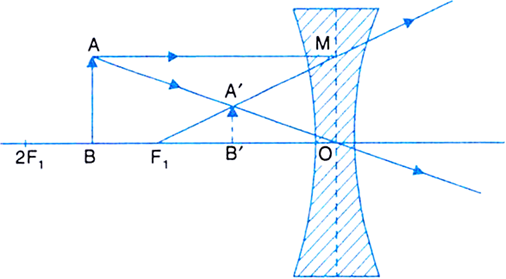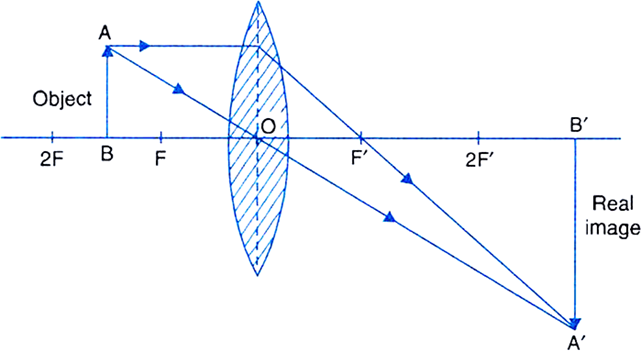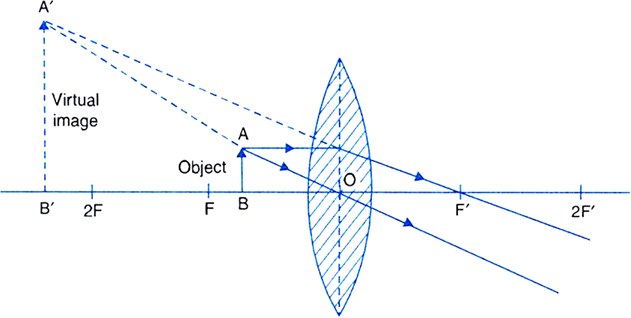Here, h = + 2 cm, u = -32 cm
v = 64 - 32 = + 32 cm [v is +ve for a real image]
Now, ![]()
![]() f = + 16 cm Ans.
f = + 16 cm Ans.
Magnification, m = ![]()
![]() Image size,
Image size, ![]()
The negative sign shows that the image is real and inverted.
The ray diagram showing the formation of image for this case is shown below: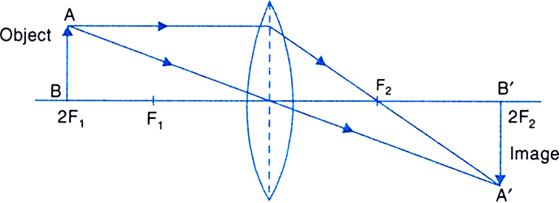
0.5
1
2
3
A.
0.5
New cartesian sign convention for refraction of light through spherical lenses. According to this sign convention:
(i) All distances are measured from the optical centre of the lens.
(ii) The distances measured in the same direction as the incident light are taken positive.
(iii) The distances measured in the direction opposite to the direction of incident light are taken negative.
(iv) Heights measured upwards and perpendicular to the principal axis are taken positive.
(v) Heights measured downwards and perpendicular to the principal axis are taken negative.
Assumptions used in the derivation of lens formula:
(i) The lens used is thin.
(ii) The aperture of the lens is small.
(iii) The incident and refracted rays make small angles with the principal axis.
(iv) The object is a small object placed on the principal axis.
Derivation of lens formula for a convex lens. As shown in Fig, consider an object AB placed perpendicular to the principal axis of a thin convex lens between its F1 and 2F1. A real, inverted and magnified image AB' is formed beyond 2F2 on the other side of the lens.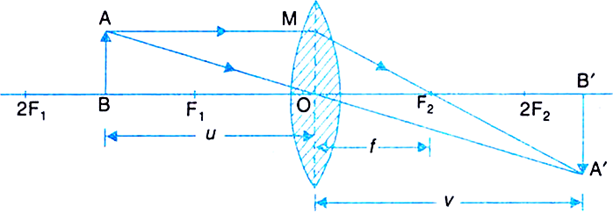
Fig. Real image formed by a convex lens.![]()
![]()
![]() ...(1)
...(1)
Also, ![]() are similar,
are similar,![]()
![]()
But MO = AB,![]()
![]() ...(2)
...(2)
From (1) and (2), we get ![]()
Using new Cartesian sign convention, we get
Object distance, BO = -u
Image distance, OB' = +v
Focal length, OF2 = + f![]()
![]()
Derivation of lens formula is not included in CBSE syllabus.
or ![]()
or ![]()
Dividing both sides by uvf, we get
![]()
This proves the lens formula for a convex lens.
